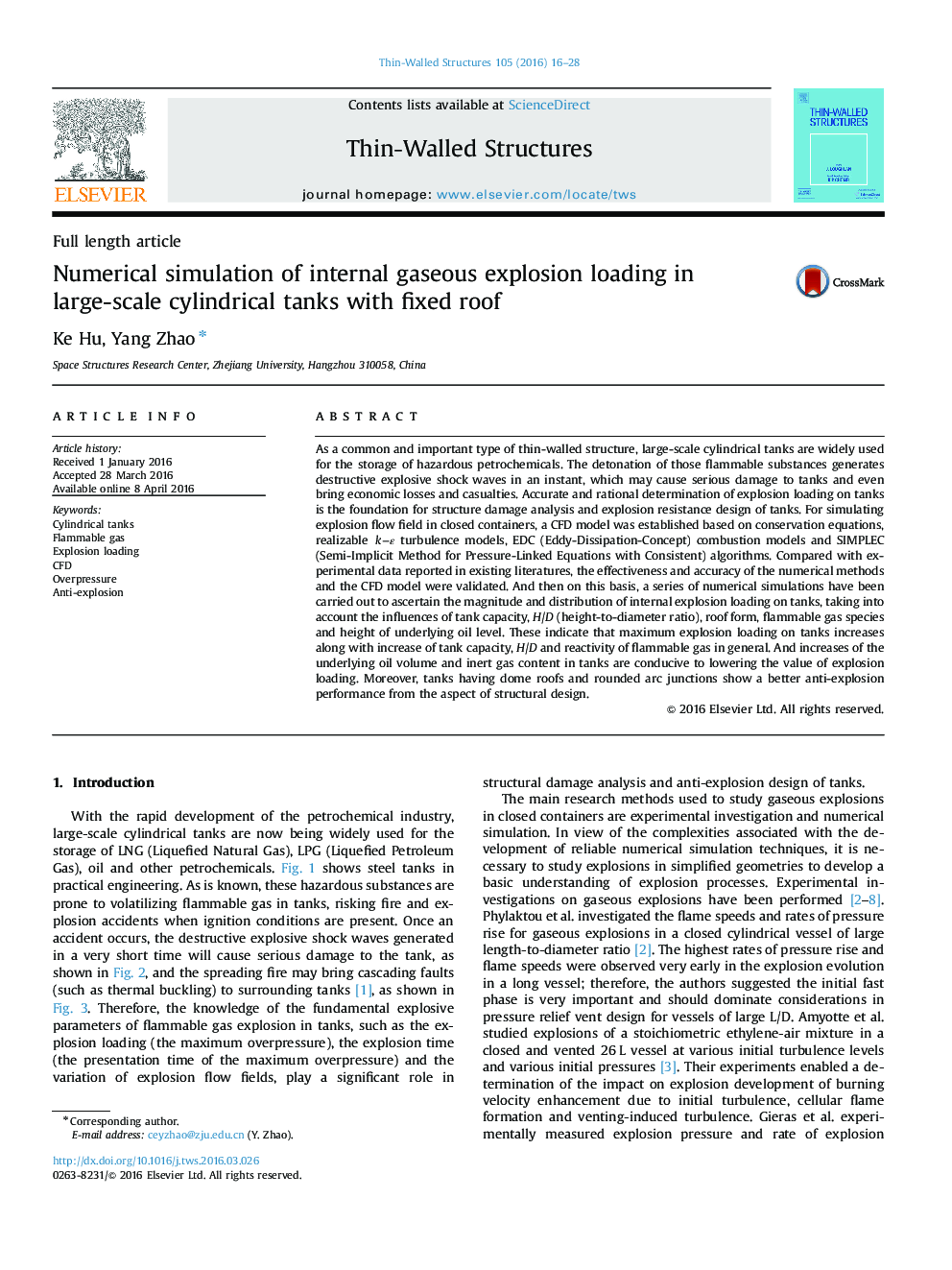| کد مقاله | کد نشریه | سال انتشار | مقاله انگلیسی | نسخه تمام متن |
|---|---|---|---|---|
| 308291 | 513546 | 2016 | 13 صفحه PDF | دانلود رایگان |
• A CFD model was developed to simulate gaseous explosions in confined containers.
• The general distribution regularities of explosion loading on tanks with various geometries are about the same.
• The maximum explosion loading on tanks enhances along with the increase of tank capacity and H/D in general.
• Increases of underlying oil volume and inert gas content in tanks are conducive to lowering the explosion power.
• Tanks having dome roofs and rounded arc junctions show a better anti-explosion performance.
As a common and important type of thin-walled structure, large-scale cylindrical tanks are widely used for the storage of hazardous petrochemicals. The detonation of those flammable substances generates destructive explosive shock waves in an instant, which may cause serious damage to tanks and even bring economic losses and casualties. Accurate and rational determination of explosion loading on tanks is the foundation for structure damage analysis and explosion resistance design of tanks. For simulating explosion flow field in closed containers, a CFD model was established based on conservation equations, realizable k-εk-ε turbulence models, EDC (Eddy-Dissipation-Concept) combustion models and SIMPLEC (Semi-Implicit Method for Pressure-Linked Equations with Consistent) algorithms. Compared with experimental data reported in existing literatures, the effectiveness and accuracy of the numerical methods and the CFD model were validated. And then on this basis, a series of numerical simulations have been carried out to ascertain the magnitude and distribution of internal explosion loading on tanks, taking into account the influences of tank capacity, H/D (height-to-diameter ratio), roof form, flammable gas species and height of underlying oil level. These indicate that maximum explosion loading on tanks increases along with increase of tank capacity, H/D and reactivity of flammable gas in general. And increases of the underlying oil volume and inert gas content in tanks are conducive to lowering the value of explosion loading. Moreover, tanks having dome roofs and rounded arc junctions show a better anti-explosion performance from the aspect of structural design.
Journal: Thin-Walled Structures - Volume 105, August 2016, Pages 16–28
